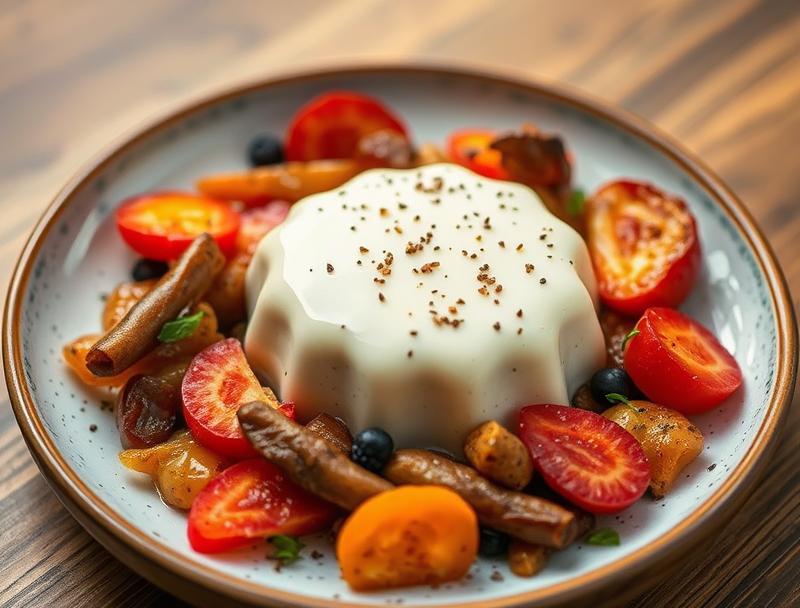Homemade Buttermilk
Introduction
Making homemade buttermilk is a surprisingly simple process that can elevate your baked goods, pancakes, and waffles to a whole new level. With just a few everyday ingredients, you can create a tangy, creamy buttermilk that’s perfect for adding moisture, flavor, and tenderness to your favorite recipes. The best part? It’s incredibly easy to make and requires minimal effort, making it a great addition to your culinary repertoire. Whether you’re a seasoned baker or a beginner in the kitchen, homemade buttermilk is a game-changer that’s sure to become a staple in your household.
Why This Works
- Flavor balance and ingredient accessibility: Homemade buttermilk uses just a few simple ingredients, including milk, vinegar or lemon juice, and a pinch of salt, making it easy to find everything you need in your local grocery store.
- Ease of preparation: Making homemade buttermilk is a breeze, requiring just a few minutes of your time and some basic kitchen equipment.
- Impressive results with minimal effort: Despite its simplicity, homemade buttermilk can make a big impact on the flavor and texture of your baked goods, adding a tangy, creamy element that’s hard to replicate with store-bought buttermilk.
Ingredients
- 1 cup milk (whole, low-fat or nonfat)
- 1 tablespoon white vinegar or lemon juice
- A pinch of salt
Instructions
- Step 1: Begin by measuring out 1 cup of milk into a small bowl or measuring cup. You can use any type of milk you prefer, including whole, low-fat or nonfat.
- Step 2: Add 1 tablespoon of white vinegar or lemon juice to the milk. This will help to curdle the milk and give it a tangy flavor.
- Step 3: Add a pinch of salt to the milk and stir gently to combine. This will help to enhance the flavor of the buttermilk and balance out the acidity from the vinegar or lemon juice.
- Step 4: Let the mixture sit for 5-10 minutes, allowing it to curdle and thicken. You’ll start to see the milk separate and form a thick, creamy texture – this is exactly what you want!
Handy Tips
- Use a glass or ceramic container: Avoid using metal containers, as they can react with the acidity in the vinegar or lemon juice and give your buttermilk a metallic flavor.
- Don’t over-stir: Gentle stirring is key when making homemade buttermilk. Over-stirring can prevent the milk from curdling properly and result in a thin, watery texture.
- Experiment with flavors: Try adding different flavorings to your homemade buttermilk, such as honey, vanilla extract or cinnamon, to give it a unique twist.
Heat Control
Since homemade buttermilk is made at room temperature, there’s no need to worry about heat control. Simply let the mixture sit for 5-10 minutes, allowing it to curdle and thicken, and you’re good to go!
Crunch Factor
Pro Kitchen Tricks
- Make it ahead: Homemade buttermilk can be made ahead of time and stored in the fridge for up to 24 hours. Simply give it a good stir before using.
- Use it in place of store-bought: Homemade buttermilk can be used as a direct substitute for store-bought buttermilk in most recipes.
- Freeze it: Homemade buttermilk can be frozen for up to 3 months. Simply pour it into an airtight container or freezer bag and store in the freezer.
Storage Tips
- Refrigerate: Homemade buttermilk should be stored in the fridge at a temperature of 40°F (4°C) or below.
- Use airtight containers: Store homemade buttermilk in an airtight container, such as a glass jar or plastic container with a tight-fitting lid.
- Freeze: Homemade buttermilk can be frozen for up to 3 months. Simply pour it into an airtight container or freezer bag and store in the freezer.
Gift Packaging Ideas
Homemade buttermilk is a great gift idea for friends and family who love to bake. Consider packaging it in a decorative glass jar or bottle, along with a few of your favorite recipes that use buttermilk. You could also include a few mix-ins, such as vanilla extract or cinnamon, to give the buttermilk a unique flavor.
Flavor Variations
- Garlic and herb: Add a clove or two of minced garlic and a sprinkle of chopped fresh herbs, such as parsley or chives, to give your homemade buttermilk a savory flavor.
- Sweet and spicy: Add a drizzle of honey and a pinch of cayenne pepper to give your homemade buttermilk a sweet and spicy flavor.
- Fruit and nut: Add a splash of fruit juice, such as lemon or orange, and a sprinkle of chopped nuts, such as walnuts or pecans, to give your homemade buttermilk a fruity and nutty flavor.
Troubleshooting
- Too thin: If your homemade buttermilk is too thin, try adding a little more vinegar or lemon juice to help it curdle and thicken.
- Too thick: If your homemade buttermilk is too thick, try adding a little more milk to thin it out.
- No curdle: If your homemade buttermilk doesn’t curdle, try using a different type of milk or adjusting the amount of vinegar or lemon juice.
FAQs
- Can I freeze it? Yes, homemade buttermilk can be frozen for up to 3 months. Simply pour it into an airtight container or freezer bag and store in the freezer.
- Is it gluten-free? Yes, homemade buttermilk is gluten-free, making it a great option for those with gluten intolerance or sensitivity.
- Can I double the recipe? Yes, you can easily double or triple the recipe for homemade buttermilk. Simply multiply the ingredients and follow the same instructions.
Conclusion
Making homemade buttermilk is a simple and rewarding process that can add a whole new level of flavor and texture to your baked goods and recipes. With just a few everyday ingredients and some basic kitchen equipment, you can create a tangy, creamy buttermilk that’s perfect for using in a variety of dishes. Whether you’re a seasoned baker or a beginner in the kitchen, homemade buttermilk is a great addition to your culinary repertoire. So go ahead, give it a try, and enjoy the delicious results!

